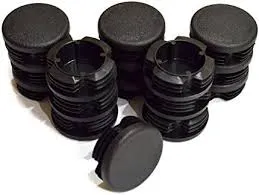Mobile:+86-311-808-126-83
Email:info@ydcastings.com
Investment Casting for High-Performance Impellers in Aerospace and Marine Applications
Investment Casting of Impellers A Precision Engineering Approach
Investment casting, also known as lost-wax casting, has become a widely used manufacturing process in various industries, especially for producing complex components like impellers. Impellers play a crucial role in fluid machinery, being vital parts in pumps, turbines, and compressors. The choice of manufacturing method for these components can significantly affect their performance, lifespan, and overall efficiency.
What is Investment Casting?
Investment casting involves creating a wax model of the part to be produced, coating it with a ceramic shell, and then melting the wax away to leave a hollow mold. This process allows for exceptional precision and surface finish, making it ideal for fabricating intricate shapes such as impellers. It offers several advantages over traditional casting methods, particularly when it comes to the level of detail and the ability to produce thin-walled components.
Advantages of Investment Casting for Impellers
1. Complex Geometries Impellers often have complex geometries that are difficult to manufacture using other methods, such as sand casting. Investment casting allows for the production of highly complex designs, which can include fine features and intricate cooling passages that are essential for optimal performance.
2. Material Versatility Investment casting can be performed with a variety of materials, including high-performance alloys, stainless steels, and even titanium. This versatility enables engineers to select materials that best suit the operational environment of the impeller, improving durability and efficiency.
3. Dimensional Accuracy One of the standout features of investment casting is its ability to produce components with tight tolerances. This is particularly important for impellers, where even minor variations can lead to imbalances and reduced performance. Investment casting can achieve dimensional accuracies of ±0.1 mm, ensuring that each impeller meets stringent specifications.
4. Surface Finish The investment casting process can yield smooth surface finishes. A finer finish reduces turbulence and helps improve fluid dynamics, which is essential for the efficient operation of pumps and turbines. This means less need for secondary machining, reducing production time and costs.
investment casting impeller

5. Batch Production Investment casting allows for the production of multiple parts in a single batch, making it a cost-effective solution for larger orders. This efficiency is particularly beneficial for industries that require a steady supply of high-quality impellers.
Applications of Investment-Cast Impellers
Impellers manufactured using the investment casting process find applications in various sectors. In the aerospace industry, lightweight and durable impellers are critical for jet engines and auxiliary power units. Similarly, in the marine sector, investment-cast impellers are utilized in propellers and pumps, where reliability and performance are non-negotiable.
The chemical processing and oil extraction industries also leverage investment-cast impellers, as these components must withstand corrosive environments while maintaining their structural integrity. Moreover, the energy sector employs investment-cast impellers in turbines, where efficiency is paramount.
The Future of Investment Casting for Impellers
As technology continues to advance, investment casting is becoming increasingly capable of meeting the demands of modern engineering. The integration of computer-aided design (CAD) and additive manufacturing is expected to further enhance the design, production, and customization of investment-cast impellers.
Moreover, with growing emphasis on sustainability, investment casting can also accommodate innovative materials that minimize environmental impact while optimizing performance.
Conclusion
Investment casting is a transformative process that presents significant advantages for the production of impellers. With its ability to create complex geometries, tight tolerances, and superior surface finishes, investment casting stands out as an essential method for high-performance component manufacturing in various industries. As technology evolves, it is poised to play an even greater role in shaping the future of precision engineering.
-
Why Should You Invest in Superior Pump Castings for Your Equipment?NewsJun.09,2025
-
Unlock Performance Potential with Stainless Impellers and Aluminum End CapsNewsJun.09,2025
-
Revolutionize Your Machinery with Superior Cast Iron and Aluminum ComponentsNewsJun.09,2025
-
Revolutionize Fluid Dynamics with Premium Pump ComponentsNewsJun.09,2025
-
Optimizing Industrial Systems with Essential Valve ComponentsNewsJun.09,2025
-
Elevate Grid Efficiency with High-Precision Power CastingsNewsJun.09,2025











